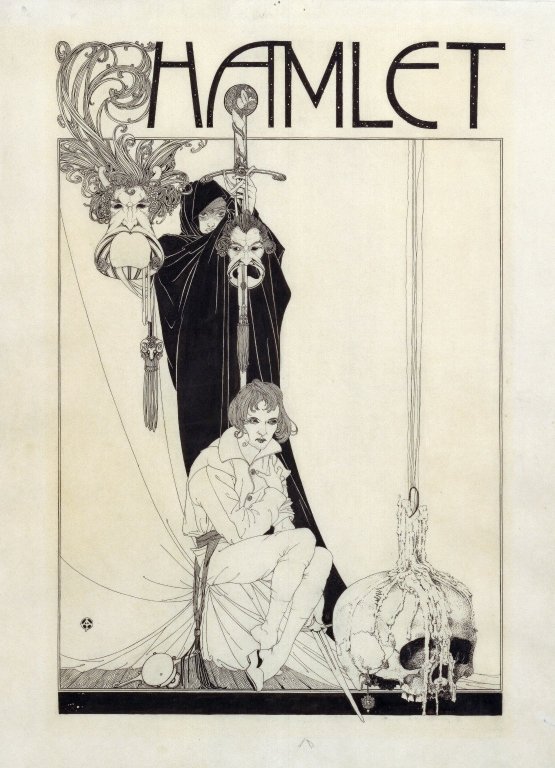
We’ve popularly come to think of the Victorian era as one in which a prudish, sentimental conservatism ruled with imperial force over the arts and culture. But that broad picture ignores the strong countercurrent of weird eroticism in the work of aesthetes like Dante Rossetti, Oscar Wilde, and Aubrey Beardsley.
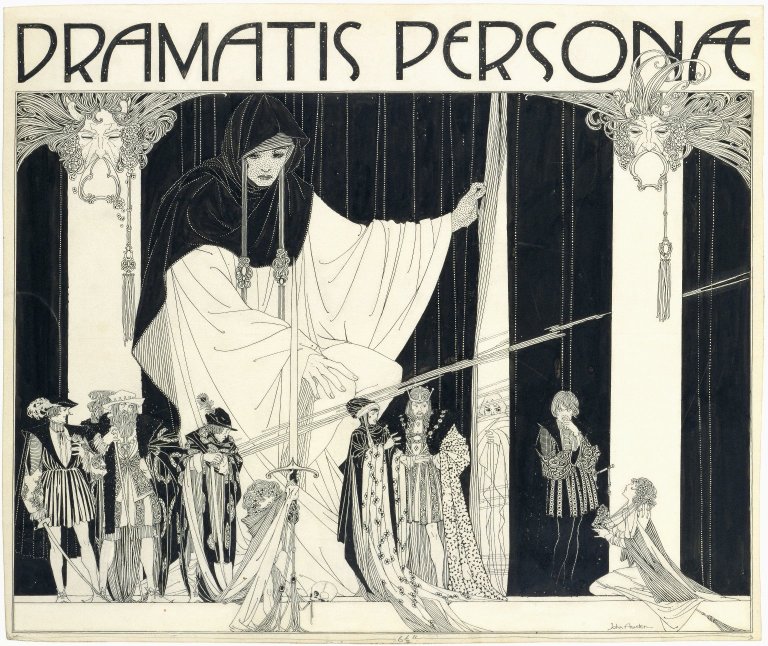
Beardsley’s elegant, bawdy illustrations of Wilde’s erotic play Salome scandalized British society, as did the play itself. His penchant for occult subjects and a wickedly sensuous style resonated well into the 20th century. Salome was a highlight of the Aesthetic movement,” writes the Met, “and an early manifestation of Art Nouveau in England.” By the 1920s, Beardsley was perhaps one of the most influential of literary illustrators.
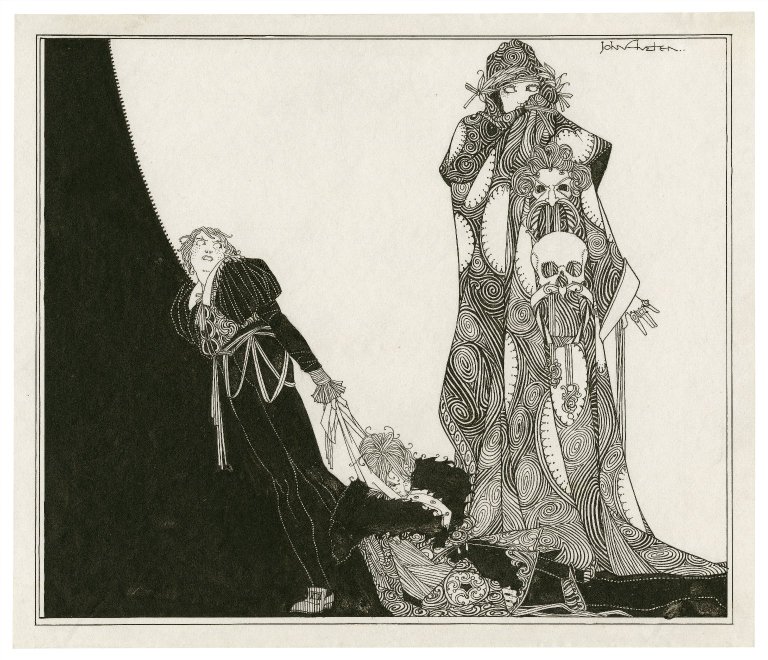
Irish artist Harry Clarke took directly from Beardsley in work like his richly-detailed 1926 edition of Goethe’s Faust. And in 1922, British artist John Austen modernized Hamlet by drawing on Clarke’s earlier work, as well as, quite clearly, on Beardsley. As artist John Coulthart remarks, “If you’re going to borrow a style then you may as well take from the best.” Like Beardsley’s Salome and Clarke’s Faust, Austen’s Hamlet “is often rated as his chef d’oeuvre, and with good reason, he manages to lend some visual splendor to a play whose concerns are a lot more introspective than the usual illustration standards of The Tempest and A Midsummer Night’s Dream” (just as T.S. Eliot had critically argued two years earlier).
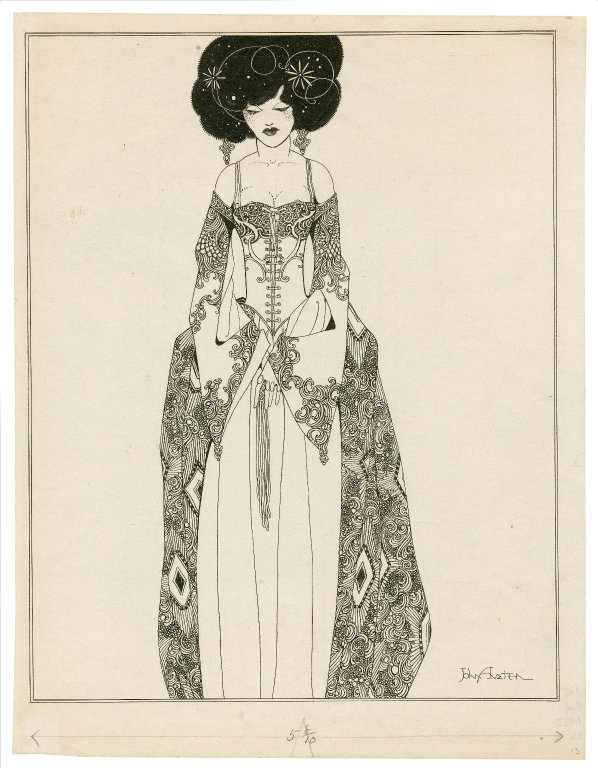
Published by Dover’s Calla Editions (and recently back in print), Austen’s illustrated Hamlet takes the fine, spare lines of Beardsley—well represented in his Poe edition—and clothes them, so to speak, with Clarke’s “manga faces, spiny fingers and swathes of black.” Each of the three artists has a different take on the macabre: Beardsley’s subtle symbolism giving way to Clarke’s surrealism and the heavy iconography in Austen’s Hamlet, permeated by the play’s archetypal images of “masks, swords and skulls.” Austen would soon leave behind the influence of both artists, adopting a much blockier style for literary illustrations later in the decade. In many ways, he represents a bridge between the elegant Art Nouveau aesthetics of Beardsley and the modernism of Art Deco, by way of Clarke’s unique gothic style.

You can view and download all of the Austen illustrations online: The Folger Shakespeare Library hosts all 121 original drawings in high resolution scans, each of which is downloadable in resolutions up to 3072px. Coulthart excerpts several of these images at his blog {feuilleton}. And at fulltable.com, you can see the Austen illustrations in context with the play’s text in high resolution scans. There, you’ll also find more modernist illustrations Austen contributed to editions of Tristram Shandy, Byron’s Don Juan and E.C. Lefroy’s Echoes from Theocritus, and a 1937 instructional book on pen and ink drawing. In at least one other instance, however, Austen retained the stylized, Symbolist Clarke and Beardsley approach—an erotic pen drawing of Sheherezade that pays full homage to Beardsley’s sensual Salome illustrations.
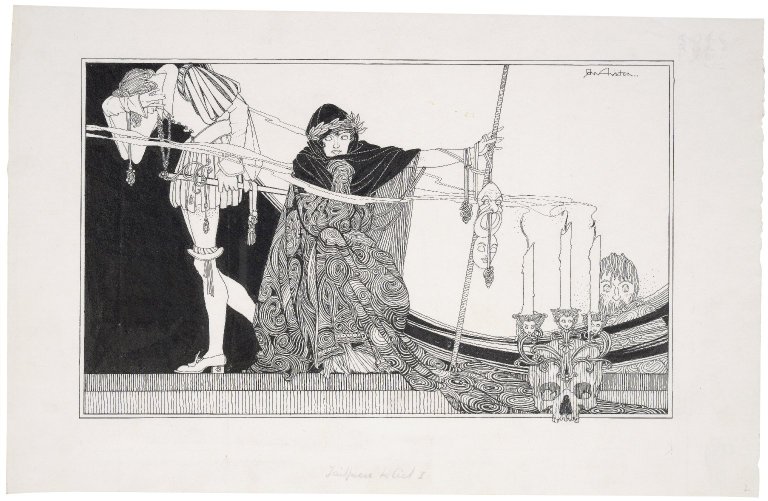
Related Content:
Harry Clarke’s 1926 Illustrations of Goethe’s Faust: Art That Inspired the Psychedelic 60s
Aubrey Beardsley’s Macabre Illustrations of Edgar Allan Poe’s Short Stories (1894)
Josh Jones is a writer and musician based in Durham, NC. Follow him at @jdmagness


where can i buy this?? ive been looking everywhere